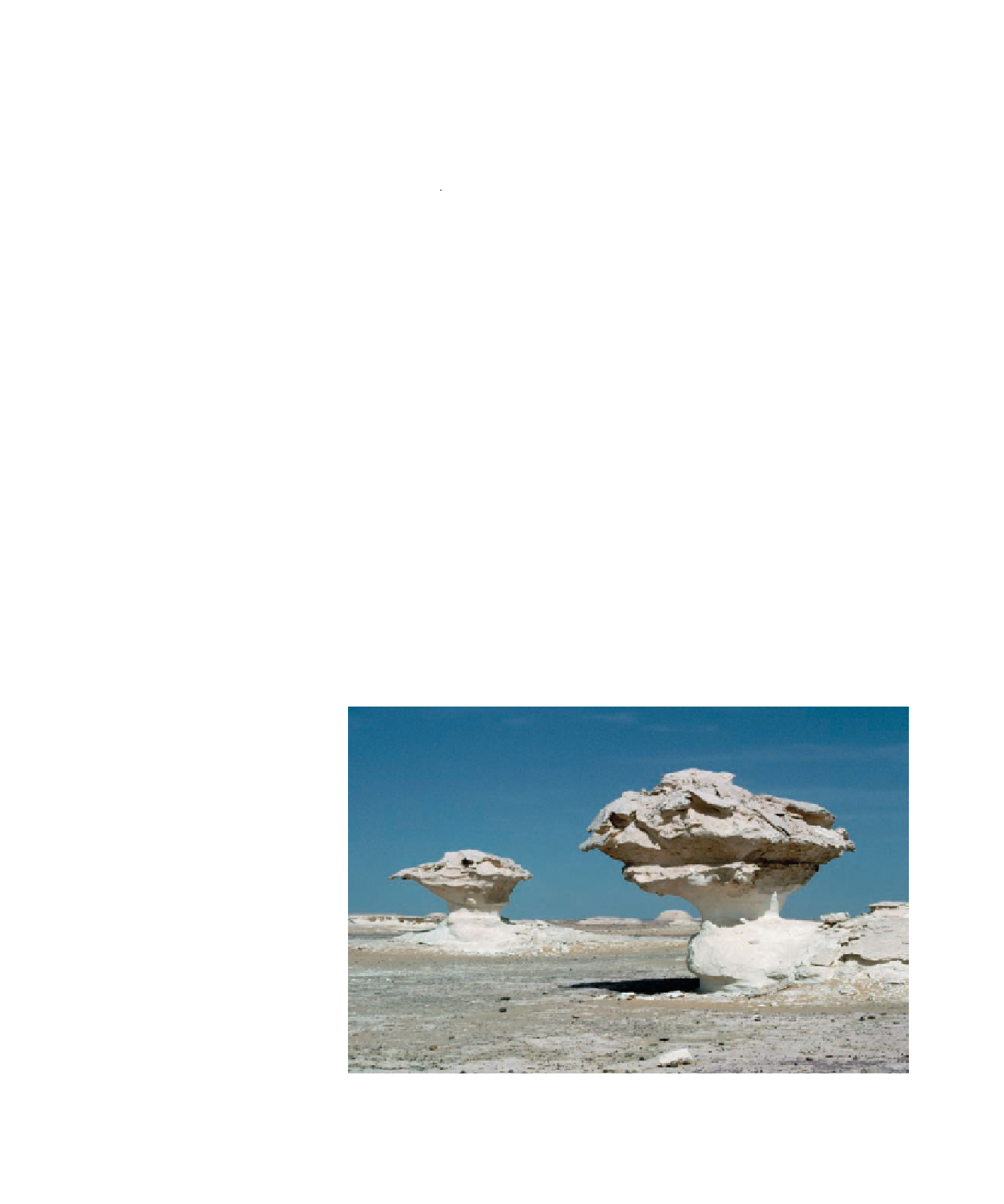Geology Reference
In-Depth Information
sorting agent, running water is responsible
for most erosional landforms in arid re-
gions, even though stream channels are
typically dry. Wind erodes material in two
ways: abrasion and defl ation.
Wind
Loose sand
surface
Abrasion
involves the impact of saltating
sand grains on an object and is analogous
to sandblasting. The effects of abrasion
are usually minor because sand, the most
common agent of abrasion, is rarely car-
ried more than a meter above the surface.
Rather than creating major erosional fea-
tures, wind abrasion typically modifi es existing features by
etching, pitting, smoothing, or polishing. Nonetheless, wind
abrasion can produce many strange-looking and bizarre-
shaped features (
◗
Figure 15.1
Saltation Most sand is moved near the ground surface by saltation. Sand
grains are picked up by the wind and carried a short distance before falling back to the
ground, where they usually hit other grains, causing them to bounce and move in the
direction of the wind.
be removed by sandblasting in a short time, and its windshield
will become completely frosted and translucent from pitting.
Silt- and clay-sized particles constitute most of a wind's sus-
pended load. Even though these particles are much smaller
and lighter than sand-sized particles, wind usually starts the
latter moving fi rst. The reason for this phenomenon is that
a very thin layer of motionless air lies next to the ground
where the small silt and clay particles remain undisturbed.
The larger sand grains, however, stick up into the turbulent
air zone where they can be moved. Unless the stationary air
layer is disrupted, the silt and clay particles remain on the
ground, providing a smooth surface.
This phenomenon can be observed on a dirt road on a
windy day. Unless a vehicle travels over the road, little dust is
raised even though it is windy. When a vehicle moves over the
road, it breaks the calm boundary layer of air and disturbs the
smooth layer of dust, which is picked up by the wind and forms
a dust cloud in the vehicle's wake.
In a similar manner, when a
sediment layer is disturbed, silt-
and clay-sized particles are easily
picked up and carried in suspen-
sion by the wind, creating clouds
of dust or even dust storms. Once
these fi ne particles are lifted into
the atmosphere, they may be car-
ried thousands of kilometers from
their source. For example, large
quantities of fine dust from the
southwestern United States were
blown eastward and fell on New
England during the dust storms
of the 1930s (see Chapter 6 Geo-
Focus on pages 148 and 149).
◗
Figure 15.2).
Ventifacts
are a common product of wind abrasion; these
are stones whose surfaces have been polished, pitted, grooved,
or faceted by the wind (
◗
Figure 15.3). If the wind blows from
different directions, or if the stone is moved, the ventifact will
have multiple facets. Ventifacts are most common in deserts,
yet they can form wherever stones are exposed to saltating
sand grains, as on beaches in humid regions and some out-
wash plains in New England.
Yardangs
are larger features than ventifacts and also
result from wind erosion (
Figure 15.4). They are elongated,
streamlined ridges that look like an overturned ship's hull.
Yardangs are typically found in clusters aligned parallel to the
prevailing winds. They probably form by differential erosion
in which depressions, parallel to the direction of wind, are
carved out of a rock body, leaving sharp, elongated ridges.
◗
Although wind action produces
many distinctive erosional fea-
tures and is an extremely effi cient
◗
Figure 15.2
Wind Abrasion Wind abrasion has formed these bizarre-shaped structures by
eroding the lower part of the exposed limestone in Desierto Libico, Egypt.






























































































































































































































































































































































Search WWH ::

Custom Search